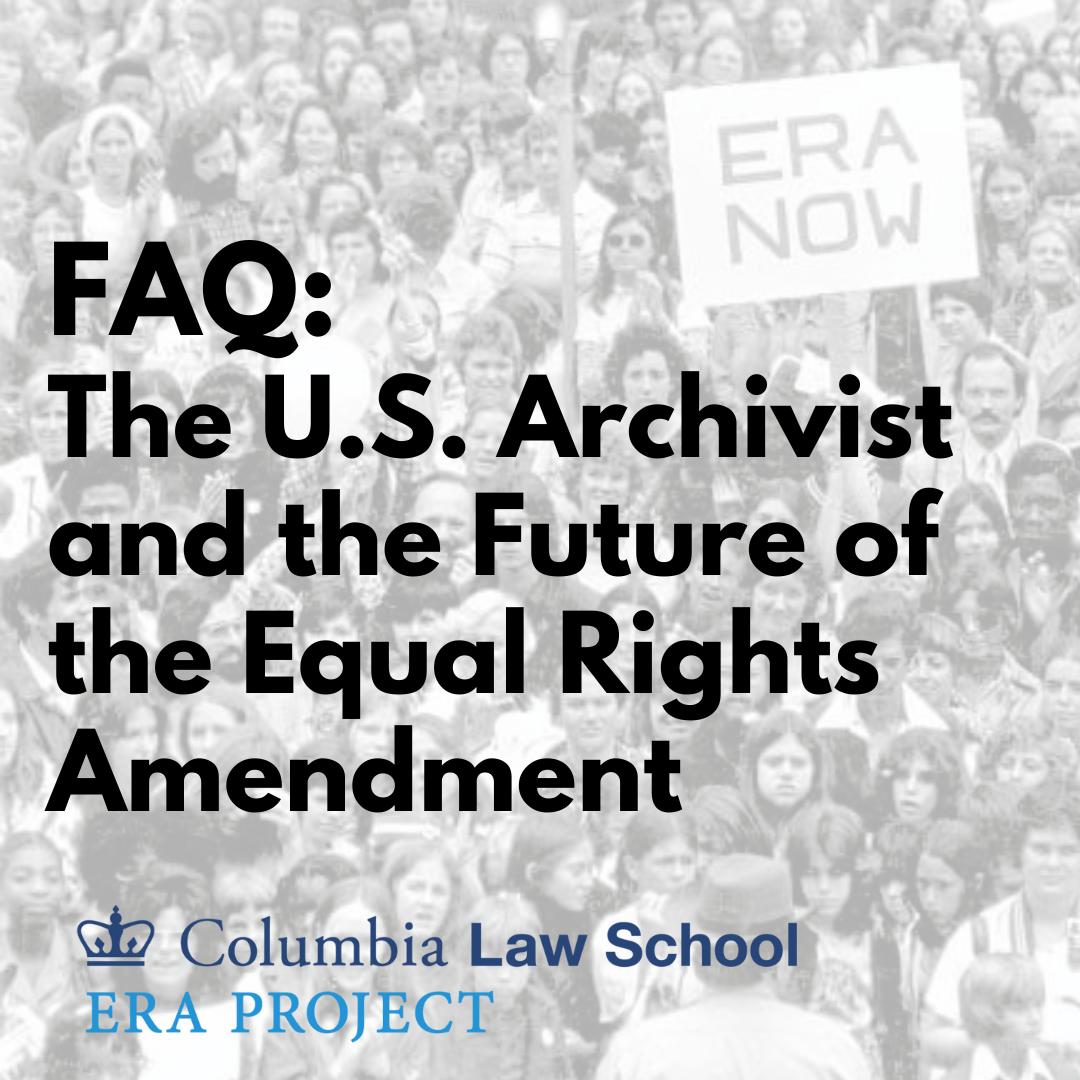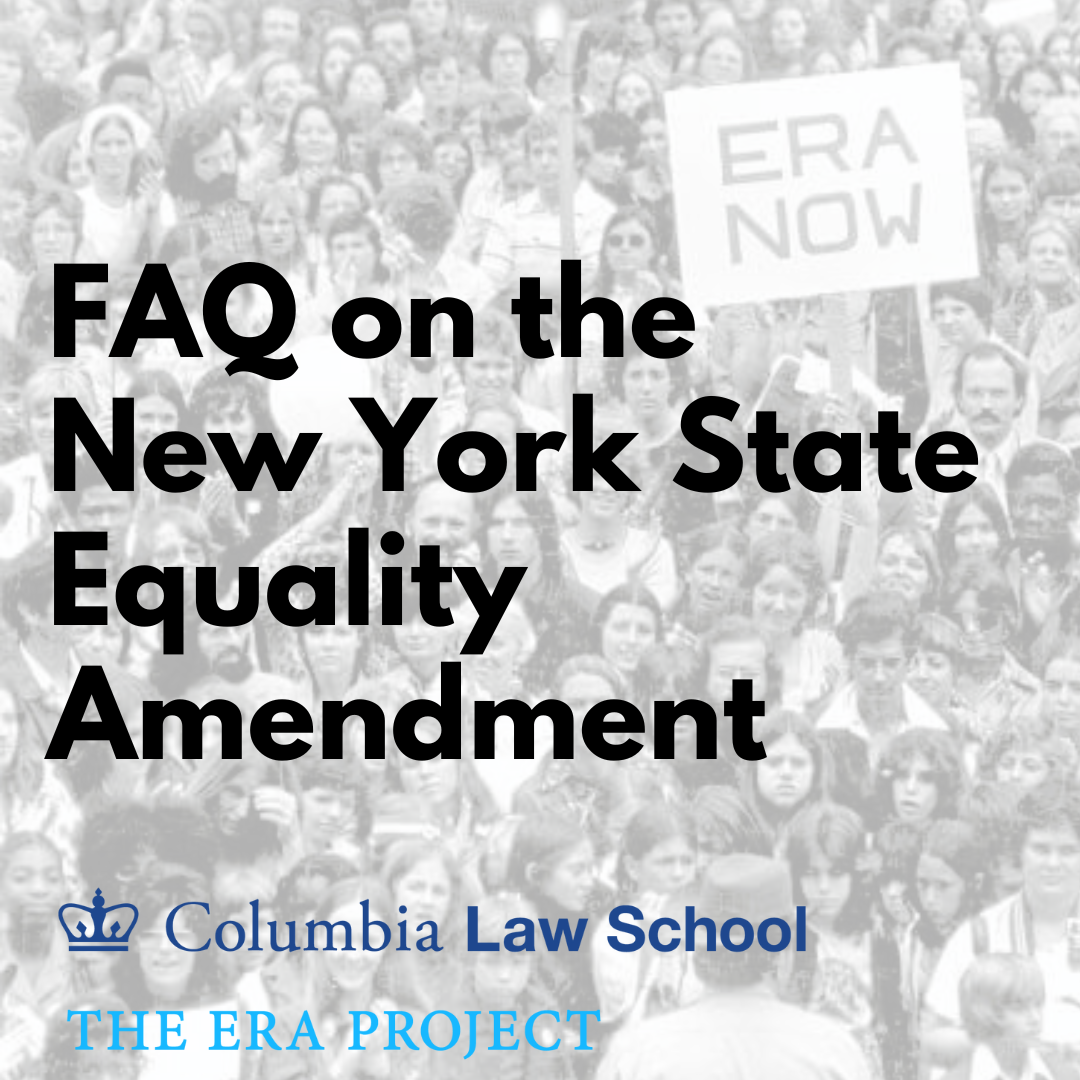The Renewed Movement for the ERA
"Equality of rights under the law shall not be denied or abridged by the United States or by any state on account of sex."
Nearly 100 years after its introduction, there is a renewed movement for the Equal Rights Amendment (ERA). On January 27, 2020, Virginia became the 38th state to ratify the ERA which completed the requirement under the U.S. Constitution (Article V) that 3/4 of the states ratify an amendment. Several additional steps remain in order to have the Equal Rights Amendment officially added to the U.S. Constitution as the 28th Amendment.
Key Facts About the ERA
- The ERA would make sex-based equality explicit in the US Constitution for the first time.
- Since 1873, the Supreme Court has issued conflicting rulings on whether the U.S. Constitution contains protections against sex-based discrimination:
- In 1873 the Supreme Court held in Bradwell v. Illinois that an Illinois law that barred women from being licensed to practice law did not violate the U.S. Constitution. Three of the justices explained the ruling: “[t]he natural and proper timidity and delicacy which belongs to the female sex evidently unfits it for many of the occupations of civil life... The paramount destiny and mission of women are to fulfill the noble and benign offices of wife and mother. This is the law of the Creator.” 83 U. S. 130, 142 (1873).
- In 1971, in Reed v. Reed, the Supreme Court found for the first time that the Equal Protection clause of the 14th Amendment (no state shall “deny to any person within its jurisdiction the equal protection of the laws") did indeed prohibit sex discrimination. The Reed case involved a challenge to an Idaho law requiring that "males must be preferred to females" in appointing administrators of estates. The Court ruled that Idaho’s law specifically making a distinction based on sex "establishes a classification subject to scrutiny under the Equal Protection Clause." However, the Court applied the lowest level of scrutiny to the sex-based classification, known as rational basis review, inquiring "whether a difference in the sex of competing applicants for letters of administration bears a rational relationship to a state objective"?
- In 1976, in Craig v. Boren, the Supreme Court ruled that sex discrimination cases brought under the Equal Protection clause of the 14th Amendment must be subject to a higher level of scrutiny than that adopted in Reed v. Reed. In Craig v. Boren the Court applied intermediate scrutiny to an Oklahoma law that imposed a lower alcohol drinking age for women than for men (the law prohibited the sale of "nonintoxicating" 3.2% beer to males under the age of 21 but allowed it to be purchased by females over the age of 18).
- In 1996, in one of Justice Ruth Bader Ginsburg’s most important decisions while sitting on the Supreme Court, in U.S. v. Virginia, Justice Ginsburg ruled that “sex based classifications may not be used, as they once were to create or perpetuate the legal, social, and economic inferiority of women.” Rejecting the Commonwealth of Virginia’s justifications for an all-male military academy, Justice Ginsburg analogized the case to racially segregated colleges and universities that also failed the constitution’s requirement of equal protection of the laws based on race. She concluded with “the Commonwealth has shown no ‘exceedingly persuasive justification' for withholding from women qualified for the experience premier training of the kind VMI affords ...” Many have referred to U.S. v. Virginia as creating a de facto ERA.
- One of the reasons why advocates have urged the adoption of the ERA now is that, by adding specific protections against sex discrimination to the Constitution, it would solidify a consistent high level of sex equality protections in the Constitution, and would prohibit a future Supreme Court from interpreting the Constitution in a way that weakened or eliminated constitutional sex equality protections.
- The ERA would prohibit discrimination on the basis of sex in multiple forms, including:
- discrimination against women;
- discrimination against men;
- sexual orientation based discrimination;
- gender identity based discrimination;
- sex or gender stereotyping (such as discrimination against a person because they are a masculine woman or a feminine man);
- discrimination in access to health care, including reproductive health care.
- The ERA would specifically prohibit sex discrimination only in the public sector, that is, it would apply only to federal, state, and local government laws, ordinances, regulations, policies, or practices.
- The ERA would not apply to actions by private entities such as private corporations, landlords, employers, etc. However, it is the expectation that final certification of the ERA would motivate passage of stronger laws prohibiting sex discrimination by private actors, and would induce private actors to implement stronger protections securing sex equality across the institutions of civil society.
The ERA Project at Columbia Law School
The Center for Gender & Sexuality Law has launched the ERA Project at a critical moment in the struggle for sex equality. The Project will work to gain certification of the ERA in the Constitution as the 28th Amendment, and then serve as a policy and advocacy shop for the implementation of constitutional sex equality protections.
There are many thorny legal questions involved in both the ratification and implementation process, all of which the ERA Project is well positioned to address. Congress must act to extend the deadline for ratification, and even once that hurdle is overcome, implementation of a constitutional guarantee of sex equality will take concerted efforts by policy-makers on a federal and state level.
Even more challenging is the question of what does sex equality actually entail? Would it require a form of “sex-blindness” similar to the “color-blindness” rule that governs race-based equality? What about pregnancy, the military, and the countless ways in which society accepts certain forms of sex-based segregation that would never be tolerated in the race context, such as single-sex schools, sports teams, and bathrooms?
The ERA Project plans to produce educational resources, host thought-provoking panels and bring together stakeholders to strategize and move the needle forward. Our goal is to ensure not only that the Equal Rights Amendment becomes part and parcel of the U.S. Constitution, but that gender justice more broadly is advanced across the nation.


